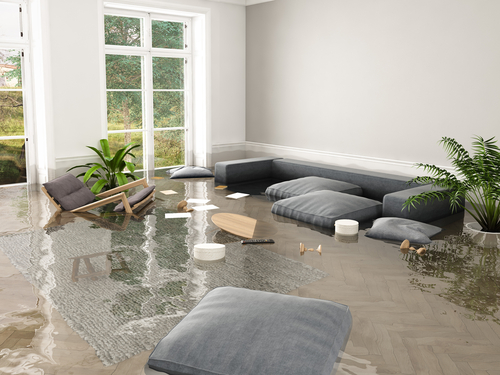
While there are a few months until the hurricane season starts, now it is the ideal time to check your property as well as your insurance policy, to make sure you have the right coverage, homeowners and renters alike. The past few years have been peppered with hurricanes and tropical storms, volcanic eruptions and wildfires, and while we can’t control the weather, we can control our expenses and keep our belongings safe by simply being insured.
Flood insurance is one such smart expense
While it is true that not all renters are at risk of a flood—those living in an apartment on the tenth floor of a high-rise don’t really have to worry about flood risk, even in high risk areas, there are many who should not skip it.
Numbers don’t look too good—the current economy has favorited the renter status throughout the country, with renters comprising from a fifth to almost half of residents in most U.S. communities. But just a mere 2 percent of the 5 million flood insurance policies active across the country are for a rental property. In other words, renters don’t rush insuring themselves against the risk of flooding.
Renters insurance doesn’t cover flooding
Less than half of renters have any insurance at all protecting their items against some perils from a storm or hurricane, including damage from high winds and heavy rain. But just like the policy for homeowners, it omits coverage for water that contacts the ground before it enters your premise. Exactly what happens during heavy rains in high risk areas: rivers overflow, flood the town and immerse homes where water does a terrible job at destroying everything: furniture, wardrobe, appliances, and more.
Flood coverage—cheaper for renters than for homeowners
The reason is quite simple: renters don’t have to worry about damage to the structure of the home, which is usually the priciest part of a flood insurance. however, adding flood coverage to your renters insurance could double your premiums, even if you live in a moderate risk area. those living in high-risk zones could end up paying many times the basic coverage, even as high as $1,000.
The National Flood Insurance Program, a federal agency, underwrites flood insurance, but the policy is sold by various insurance companies. However, if your insurance company doesn’t have a partnership with the NFIP, you can purchase it directly from them.
Once you’ve submitted the application and are given a policy, you have to wait 30 days for it to kick in. So if you are not currently covered for flood risk, now would be an ideal time to change that.




